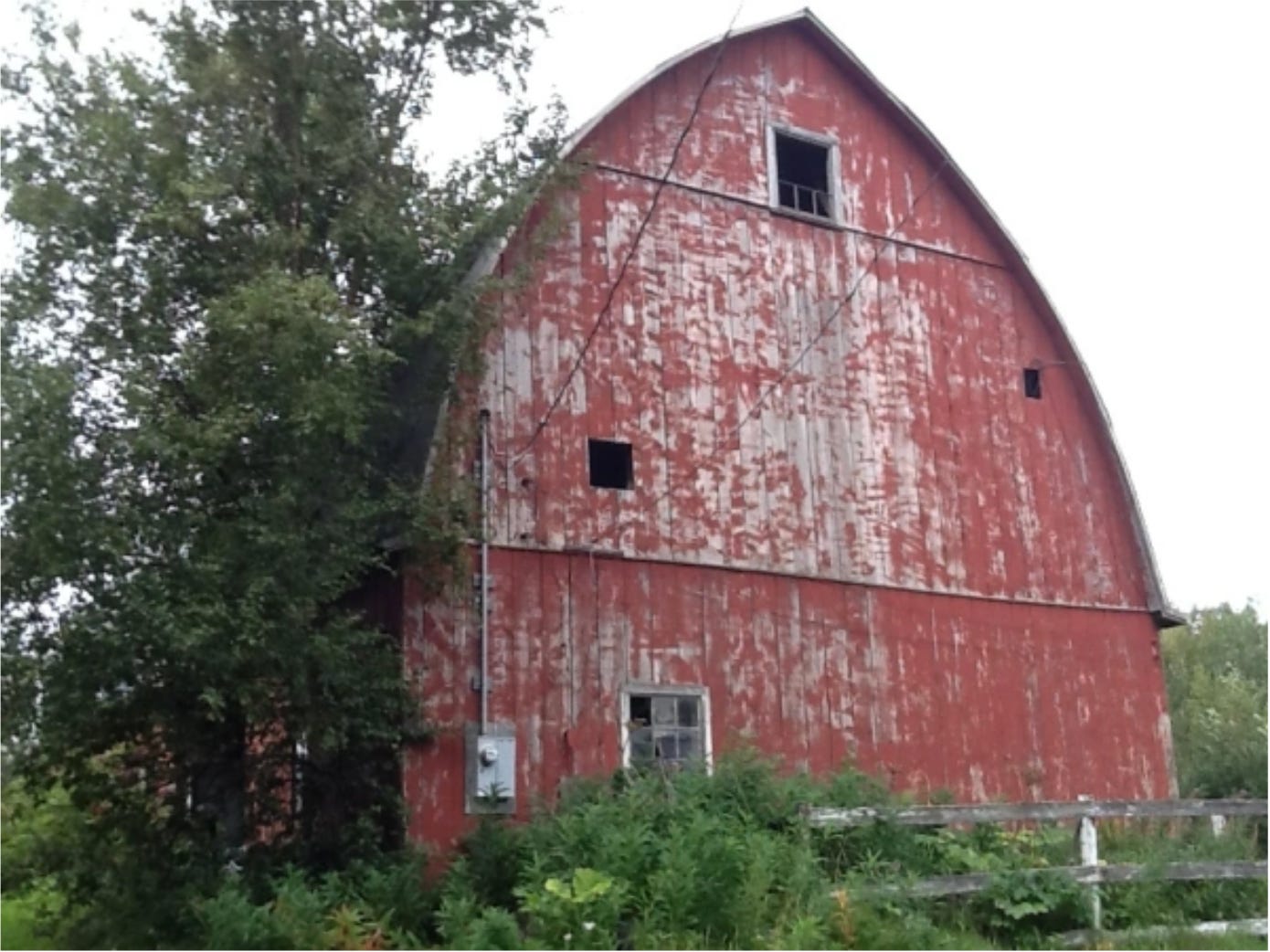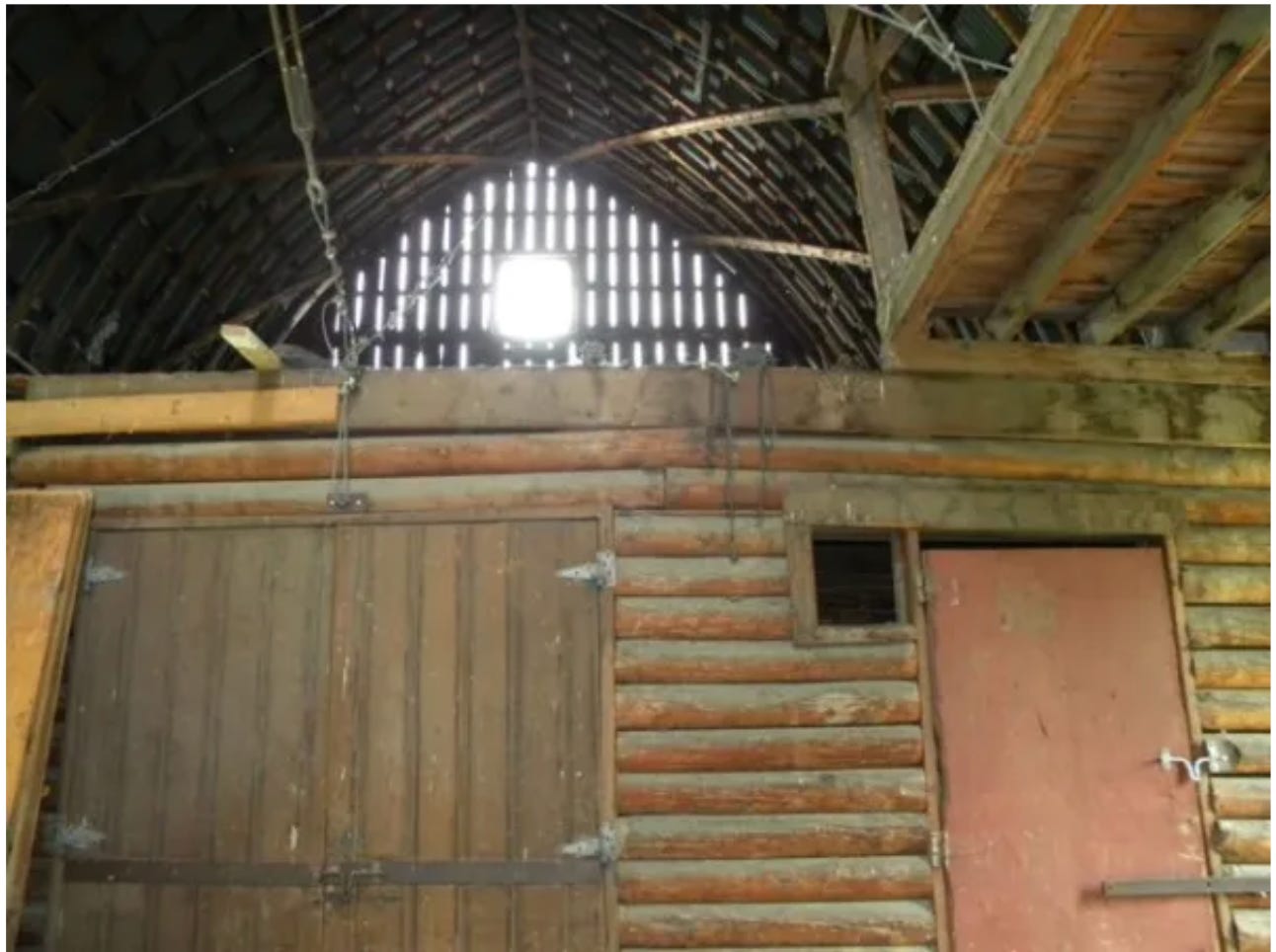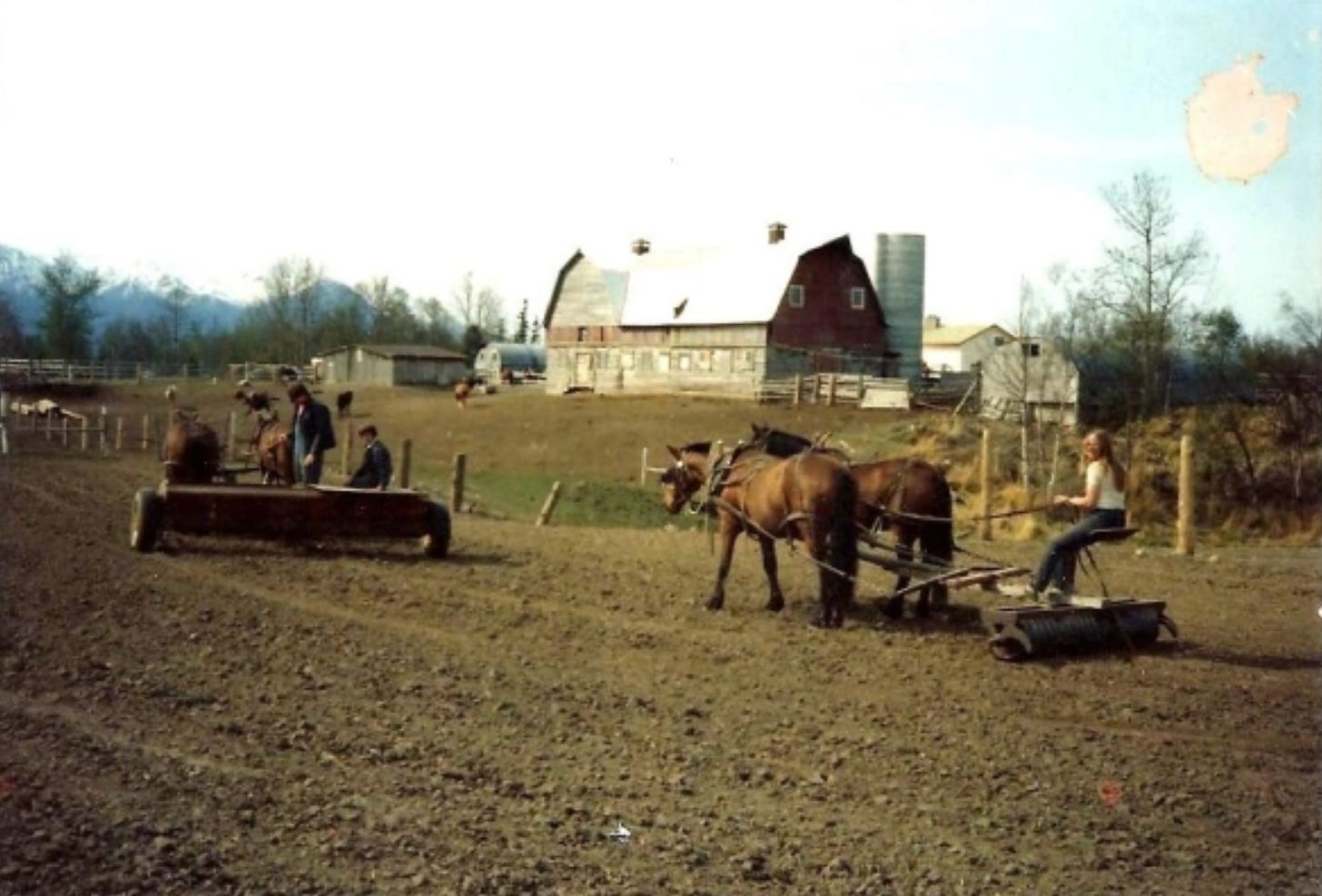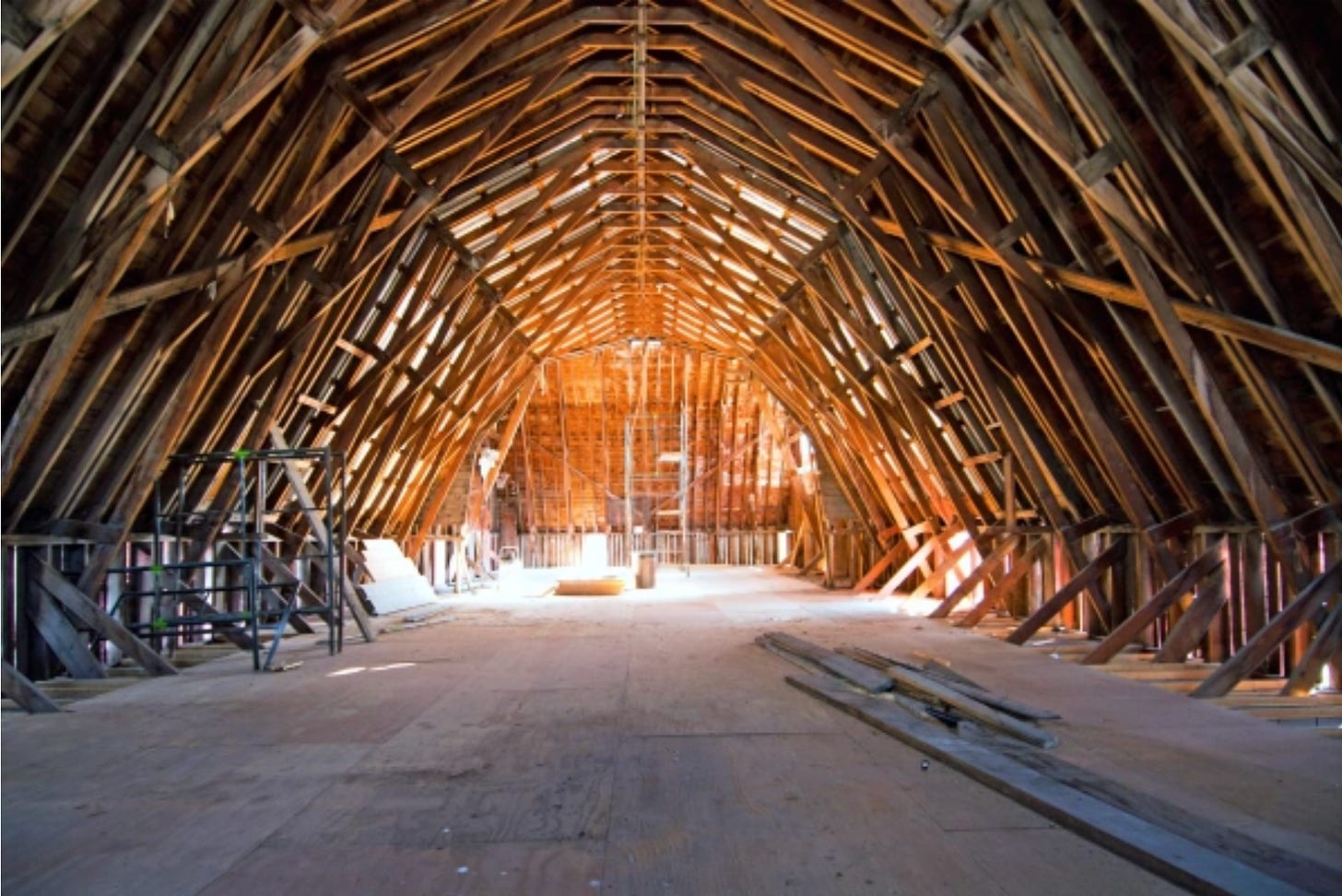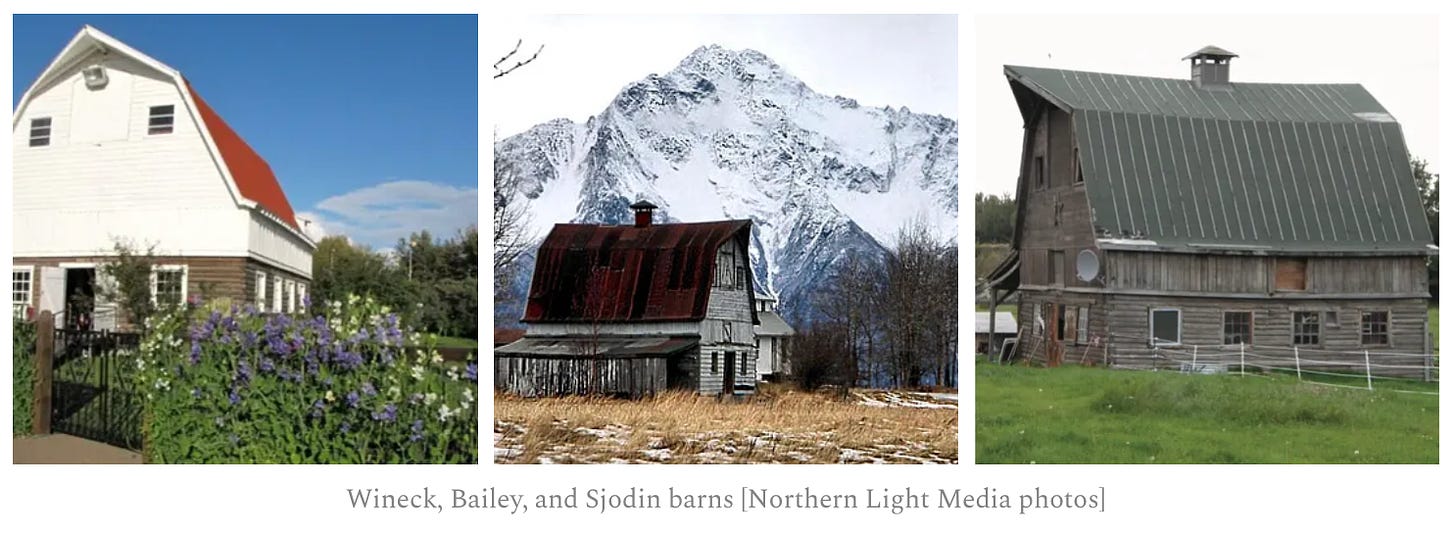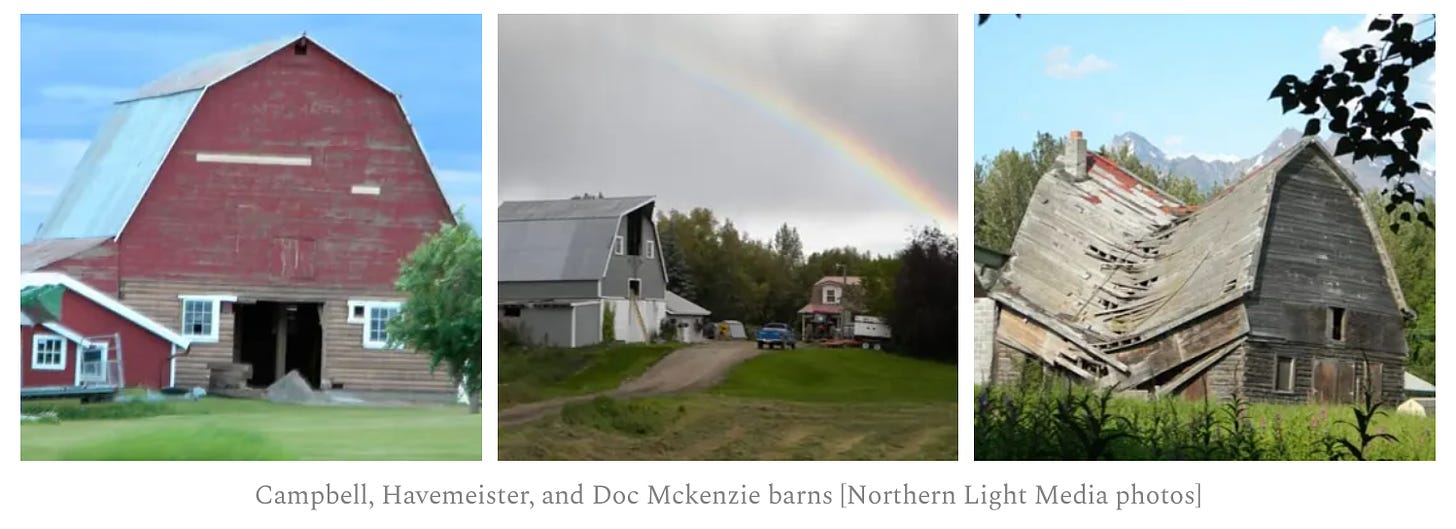In The Matanuska Colony Barns: The Enduring Legacy of the 1935 Matanuska Colony Project, by Helen Hegener (Northern Light Media, 2013), features the barns of the last great government-sponsored pioneering adventure, the largest, most expensive, and most audacious of the planned communities built by President Franklin Delano Roosevelt’s New Deal for America. That history is detailed in the book, “A Mighty Nice Place,” The History of the 1935 Matanuska Colony Project, by Helen Hegener (Northern Light Media, 2016), but the barns are the focus of the 2013 book.
Among the more interesting barns, the Arndt barn stands out as one of the last arch-roofed barns, which—like the Monroe, Eckert, and Puhl barns—had a soaring vaulted roof design, with a high ridge peak, quite different from the standard 32′ x 32′ gambrel roof design of most of the Colonist’s barns. Also known as the curved or Gothic roof, the curvature was built up of boards bent to the desired radius and nailed together to provide adequate strength to support the huge roof structure. Like the standard Colony barns, the bottom section was built with three-sided logs, set on spruce pilings. The inside of the barn was partitioned into areas of various sizes, and a storeroom under the steep stairwell which accessed the hayloft.
The Manuska-Susitna Borough’s 1985 book, Knik Matanuska Susitna: A Visual History of the Valleys, noted: “The Lawrence Arndt colony farm has been familiar to Valley residents for years as Arabian Acres where owners Robert and Gladys Swift raised purebred Morgan horses. During the colony era, the Arndt house was the site of the neighborhood telephone.”
The large double barn at the Museum of Alaska Transportation and Industry (MATI) was known locally as the Breeden barn, but it was actually created from two separate Colony barns by an early Valley homesteader named Frank Linn, whose son Allan grew up to be the State Director of Agriculture from 1975 to 1979.
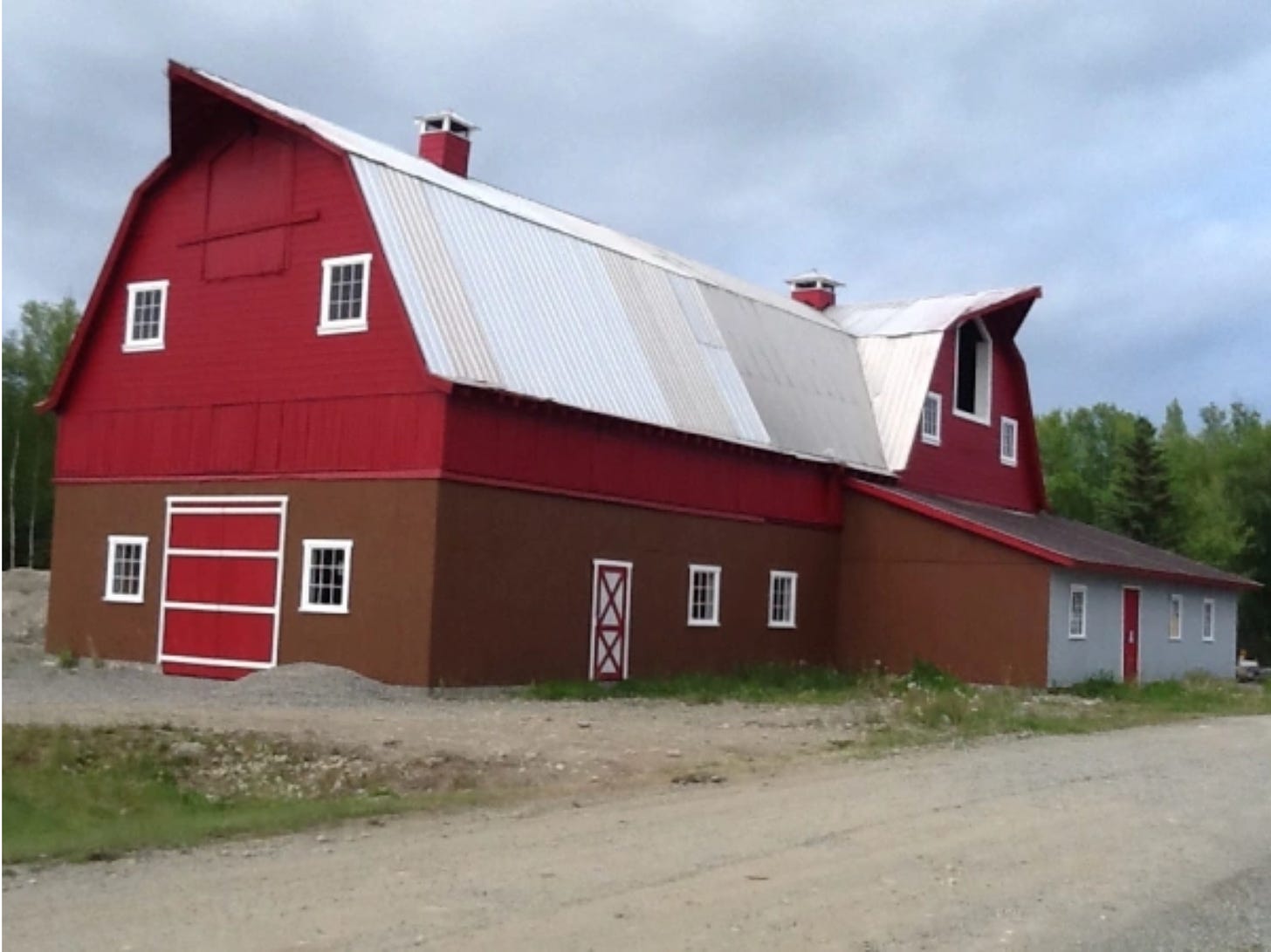
Frank Linn came to Alaska in 1927 and spent three years working at the Matanuska Experiment Station. In 1928 he purchased 160 prime acres on the southern border of the Station, on a bluff with a commanding view of Pioneer Peak and the Chugach Mountains. In 1935 he sold his land to the Alaska Rural Rehabilitation Corporation (ARRC) for $5.09 an acre. Colonist Amedee Wilson won the choice tract in the original drawing, but in 1937 Amedee, his wife Leah, and their four children left Alaska.
Frank and Vera Linn acquired the tract again in 1938, and in 1941 they added the neighboring tract, which had been won by Emil Larsh. The Linn family developed a dairy farm, and in 1943 they moved the Larsh barn adjacent to the Wilson barn at a right angle, creating the immense 85-foot-long by 28-foot-wide structure.
In 1957, Anchorage dairy farmers Don and LaVera Breeden purchased the Linn dairy and in 1958 they moved their operation to the Matanuska Valley. The dairy farm eventually changed into a vegetable farm, then became the Matanuska Riding Stables and Guest Ranch, and in later years the Matanuska Lake RV Park.
In 2006 the Breeden family donated the barn to the Museum of Alaska Transportation and Industry, and after all the permits, clearances, and other paperwork was in place, in the early morning hours of August 26, 2007, the giant structure was loaded onto a flatbed truck and made the slow journey from its former home behind the Mat-Su Regional Medical Center to the Museum of Alaska Transportation and Industry north of Wasilla.
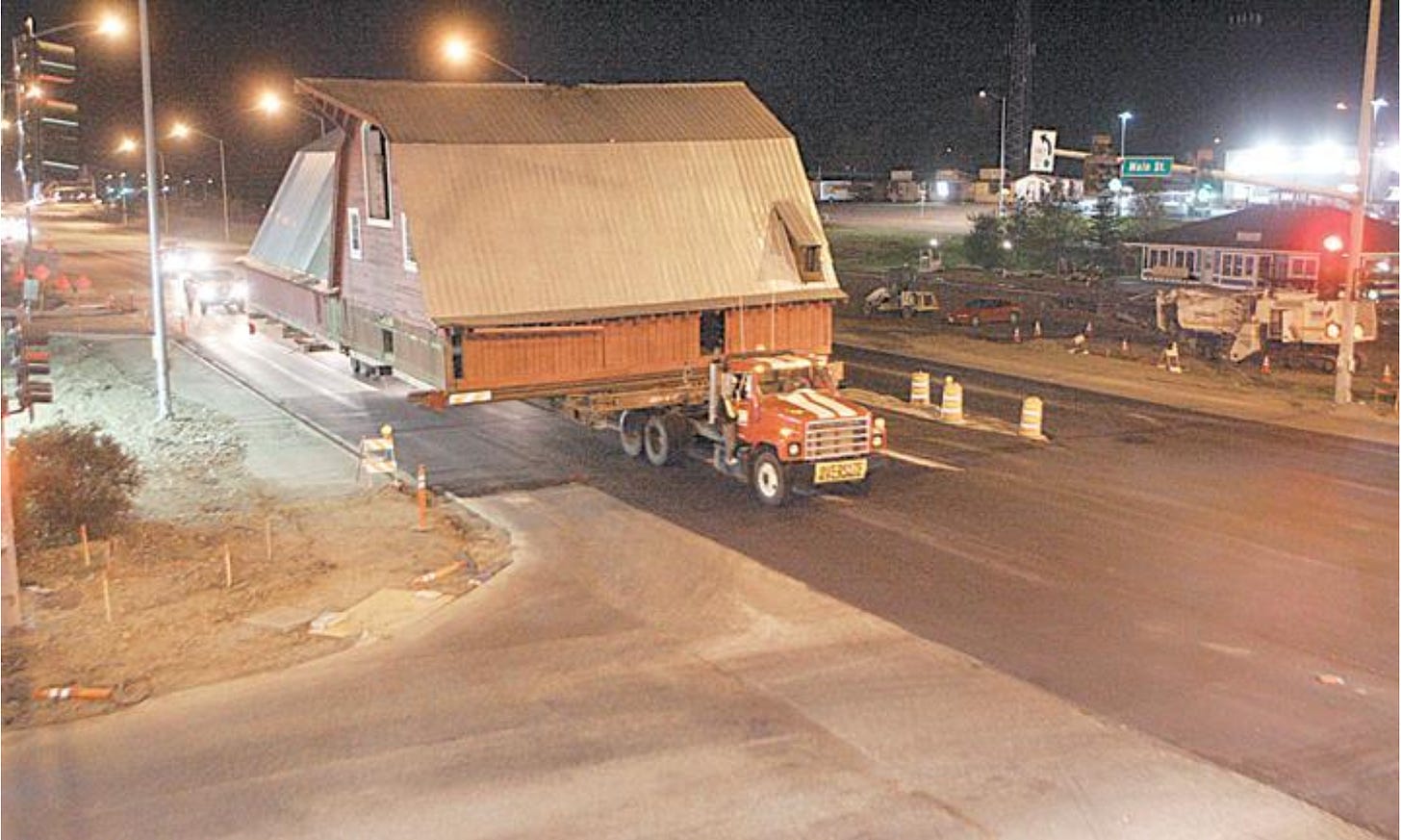
These stories and many others fill the pages of The Matanuska Colony Barns: The Enduring Legacy of the 1935 Matanuska Colony Project. Dozens of photographs by Eric Vercammen, Stewart Amgwert, Albert Marquez, Dave Rose, Joanie Juster, Ron Day and others. Foreword by Barbara Hecker. Introduction by James H. Fox. 140 pages, full color. ISBN 978-0-9843977-4-7. Includes Colonist families listing, maps, bibliography, resources, index. $29.00 plus $5.00 for First Class postage.
“Helen Hegener has produced more than a coffee-table tome of lovely photos. Her book holds a succinct but comprehensive history–well researched, reader friendly, and amply illustrated with historic photographs, professional full-color images, and personal snapshots from friends and fans of the Colony barns. The barns are described as wholly dimensional characters portrayed with such tender compassion and admiration that the reader recognizes Hegener’s joy in a barn’s beauty and function, and her sadness at the decline of so many.” -Barbara Hecker, for the Mat-Su Valley Frontiersman





